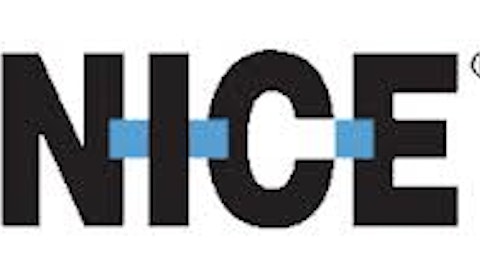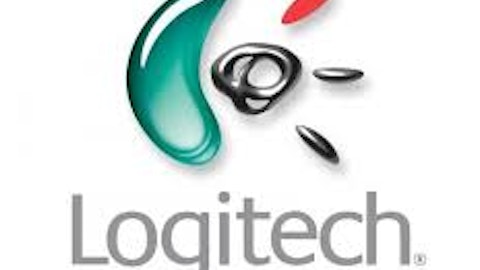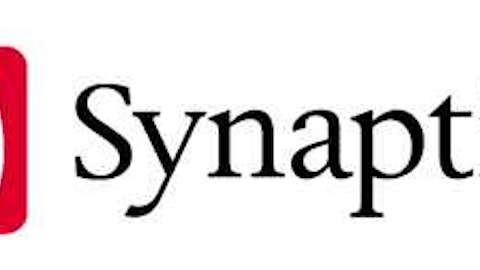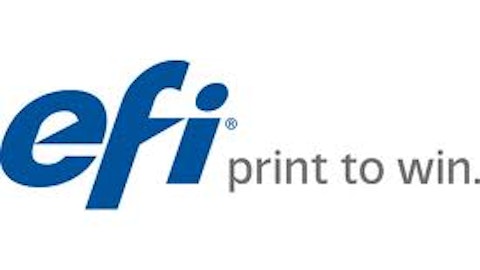Pangaea Logistics Solutions, Ltd. (NASDAQ:PANL) Q4 2022 Earnings Call Transcript March 17, 2023
Operator: Good morning. My name is Shelby, and I will be your conference operator today. At this time, I would like to welcome everyone to the Pangaea Logistics Solutions Fourth Quarter and Full Year 2022 Earnings Teleconference. Today’s call is being recorded and will be available for replay beginning at 11:00 o’clock a.m. Eastern Standard Time. The recording can be accessed by dialing 800-283-9429 domestic or 402-220-0871 international. It is now my pleasure to turn the floor over to Noel Ryan with Vallum Advisors.
Noel Ryan: Thank you, operator. And welcome to the Pangaea Logistics Solutions’ fourth quarter and full year ’22 results conference call. Leading the call with me today is CEO, Mark Filanowski; Chief Financial Officer, Gianni Del Signore; and COO, Mads Petersen. Today’s discussion contains forward-looking statements about future business and financial expectations. Actual results may differ significantly from those projected in today’s forward-looking statements due to various risks and uncertainties, including the risks described in our periodic reports filed with the SEC. Except as required by law, we undertake no obligation to update our forward-looking statements. At the conclusion of our prepared remarks, we will open the line for questions. And with that, I would like to turn the call over to Mark.
Mark Filanowski: Thank you, Noel. And welcome to those joining us on the call and webcast today. After the market closed yesterday, we issued results for the three and 12 months ended December 31, 2023. Last year, we continued to develop a leading dry bulk logistics and transportation services company of scale, while providing our customers with specialized shipping, supply chain and logistics offerings in commodity and niche markets. Our record full year profitability and operating cash flow put on display the durability of our vertically integrated premium rate shipping logistics model during a period of pronounced market volatility. TCE rates were strong in the first half of 2022, with the first six months being some of the best we’ve seen in years.
During this period, we capitalized on the strong demand and rate environment by fully utilizing our fleet, including our four new build Ice-Class vessels, together with five second hand vessels purchased in the prior 24 months and the purchase of one third interest in our NBHC joint venture from one of our partners in late 2020, which effectively added two more vessels to our fleet. During the fourth quarter, our chartered-in strategy drove positive arbitrage in a falling rate market. While market conditions deteriorated during – beginning in the latter half of 2022, our long-term transportation contracts and flexible chartered-in fleet positioned us to perform well in excess of the market indices. TCE earn declined 38.5% on a year-over-year basis in the fourth quarter, but our average TCE rate exceeded the average benchmark by 41% in the period.
First quarter 2023 to date, our TCE booked for 3,970 ship days is $15,065 per day. Our premium rate model, which leverages the integrated benefits of specialty cargo carriage and onshore supply chain solutions, contributed to the 480 basis points adjusted EBITDA margin expansion realized in the fourth quarter when compared to the prior year-end year period. In 2022, we generated nearly $100 million in free cash flow, positioning us to pursue a balanced self-funded approach toward organic and inorganic growth investments together with a robust and consistent dividend program. In 2023, our capital allocation priorities will include fleet renewal and measured expansion, expanding our logistics platform, particularly as it relates to complementary, immediately accretive onshore opportunities, further debt reduction and continued support of our quarterly cash dividend, which on an annualized basis represents more than $18 million in dividends to shareholders.
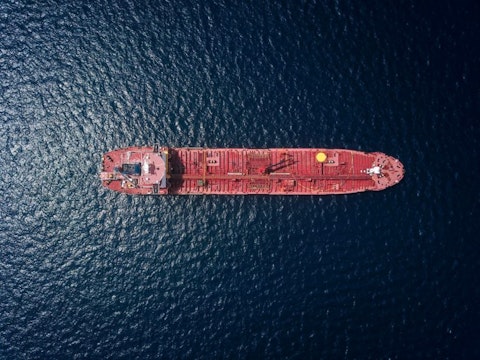
Photo by Shaah Shahidh on Unsplash
Looking ahead to the remainder of 2023, we anticipate that a post-pandemic reopening in China and stable economic activity in the west should provide incremental support for global dry bulk demand. On the supply side, global dry bulk shipping capacity is constrained for the foreseeable future, given the combined impact of low new-build activity and recent introduction of new IMO mandated emissions reduction regulations that will impact older, less efficient fleets and will further restrict new building orders. In January 2023, we entered into an agreement to sell our Bulk Newport, a 2003 Supramax vessel, for $9.2 million. This sale is consistent with our strategy of maintaining a modern and efficient fleet amid tightening global emissions regulations.
Looking ahead, we intend to opportunistically manage our fleet and commercial operations with the purpose of maximizing TCE rate, while continuing to support client requirements. In closing, I want to personally thank all of our employees, partners and shareholders for their continued support. We see many opportunities for profitable growth on the horizon, and we look forward to providing you regular updates on our progress. With that, I’ll hand it over to Gianni.
Gianni Del Signore: Thank you, Mark. And welcome to all of those joining us today. Our fourth quarter financial results continue to emphasize the flexibility of our business model as we were able to maximize our operating leverage through our chartered-in strategy and deliver solid returns that made a weakening dry bulk market. Fourth quarter TCE rates were approximately $20,000 per day, a premium of more than 40% to the average published market rates for Supramax and Panamax vessels in the period, which is supported by our long-term COAs and our ability to opportunistically lock in short-term cargo business. Adjusted EBITDA for the quarter was $26.8 million, capping off 2022 with full year adjusted EBITDA of $140 million, a record for Pangaea.
Our margins expanded approximately 480 basis points on a year-over-year basis in the fourth quarter even as adjusted EBITDA declined year-over-year. The overall decline in adjusted EBITDA in the fourth quarter was primarily due to a 45% year-over-year decrease in total revenue attributable to lower market rates and a 29% decline in total shipping days. This revenue decline was partially offset by lower chartered-in higher expenses, which declined by $86.8 million year-over-year to $28.2 million in the fourth quarter. Chartered-in days declined by 55%, as the company’s favored trip charters over period charters in the fourth quarter of ’22 versus 2021. Vessel operating expenses increased approximately 21%. However, for the full year, vessel operating expenses on a per-day basis, excluding management fees was approximately $5,800 a day, an increase of about 10%, mainly due to increased crew travel expenses and crew management expenses.
As we’ve discussed in the past, we utilized forward freight agreements and bunker swaps to selectively hedge our exposure to the market on our long-term cargo contracts and forward bookings. While this approach locks in future cash flows, the mark-to-market unrealized gains or losses can lead to fluctuations in our reported results on a period-to-period basis, while settlement of the position and execution of the physical will occur at a future date. As such, during the fourth quarter, our reported net income reflects unrealized gains of approximately $1.1 million and $465,000 relating to mark-to-market adjustments on bunker swaps and forward freight agreements respectively and an unrealized loss on interest rate derivatives of $371,000. In total, our reported GAAP net income attributable to Pangaea for the fourth quarter was $15.5 million or $0.34 per diluted share in line with the fourth quarter of 2021.
Moving on to the cash flow statement. Total cash from operations increased 73% year-over-year to $32.9 million in the fourth quarter of 2022. As a result, the company had $128.4 million in cash and cash equivalents and total debt, including finance lease obligations of $299.5 million. During the quarter, the impact of higher interest rates was relatively muted in our results due to our fixed rate and cap rate debt. Of our total long-term debt and financial leases, 53% is fixed at an all-in rate of 4.04%. 40% is capped at LIBOR rate of 3.25% and 8% is floating at LIBOR plus 2.1%. At the end of the fourth quarter of 2022, the ratio of net debt to trailing 12 month adjusted EBITDA was 1.25 times. In conclusion, our vertically integrated shipping and logistics model delivered above-market growth during the fourth quarter, supported by strong execution of our chartered-in strategy, continued fleet expansion and disciplined capital allocation.
Entering 2023, our liquidity position has never been stronger, positioning us to drive strategic investments in new vessels and logistics operations, while continuing to reduce debt and pay a stable quarterly cash dividend. As we seek to deploy capital toward new growth opportunities, we will aim to further optimize our return on capital invested, consistent with our commitment to long-term value creation for our shareholders. With that, we will now open the line for questions.
See also 20 Biggest Publishing Companies in the World and 10 Most Profitable Cryptocurrency Stocks.
Q&A Session
Follow Pangaea Logistics Solutions Ltd. (NASDAQ:PANL)
Follow Pangaea Logistics Solutions Ltd. (NASDAQ:PANL)
Operator: Thank you. And we’ll take our first question from Liam Burke with B. Riley.
Liam Burke: Thank you. Good morning, Mark. Good morning, Gianni.
Mark Filanowski: Morning, Liam. Good to hear from you.
Liam Burke: Thank you. Mark, you mentioned the IMO mandate in terms of carbon emissions and slow steaming. I know it’s early in the year, but are you seeing any further capacity tightening on the global fleet related to slow steaming?
Mark Filanowski: We don’t see it yet, Liam. I think people are still trying to figure out exactly how the CII regulations are going to affect everyone. You’ve got to be careful on how you plan your voyages and try to operate your ships as efficiently as possible to make sure that you don’t end up with a problem at the end of the year by doing something that’s going to affect you early in the year. So people are trying to work their way through these regulations. We’re looking at the CII impact of voyages already on our ships and trying to make sense of exactly what we’re going to have to do toward the end of the year to make sure that we get the best ratings on our ships. Mads Petersen is here with me. He is really leading the charts here on the Pangaea side in terms of these regulations. Maybe he has a comment directly.
Mads Petersen: No. But thanks, Mark. Hi, Liam. It is actually a question at the moment of Pangaea. We’re sort of shadow complying with it, where we are monitoring and tracking how we are stacking up against the new regulation, but it’s not something that has an operational impact yet. I hope this was helpful for many others.
Liam Burke: Okay. Got it. Your CapEx is relatively low, except if you go out and buy more assets. But cash flow should be strong, your balance sheet is in the best shape ever. How are you looking at capital allocation in 2023?
Gianni Del Signore: Hey, Liam. It’s Gianni. I think we’re pretty consistent. Our strategy remains the same. It’s been for many years. And I think we – like you said, we’ve never been in a better position. We can be opportunistic and we can look at different things that, in the past, perhaps we wouldn’t be in a position to look at. That being said, I think if we look at our priorities, our chartered fleet and our own fleet are always priorities for us. We’re selling the Bulk Newport. We may look at one or two additional assets this year to sort of supplement the fleet and continue to look for some opportunities to renew. Debt service, we continue to pay down debt. We’re paying $8 million to $10 million a quarter for 2023. And then we have our first meaningful balloon in Q2 of ’24.
So we want to be in a position to have a flexibility to do what we want as we approach that balloon. It’s about $20 million, $20 million balloon in 2024. And then we said it before, our message to everyone is we try to be consistent and that goes for our dividend as well. So we want to continue to be in a position where we can pay that dividend through the cycle for as long as possible. But it’s good to be in a position we’re in and it’s good to have that flexibility so we can be opportunistic.
Liam Burke: Great. Thank you. Gianni. Thank you, Mark. Thank you, Mads.
Operator: We’ll take our next question from Poe Fratt with AGP.
